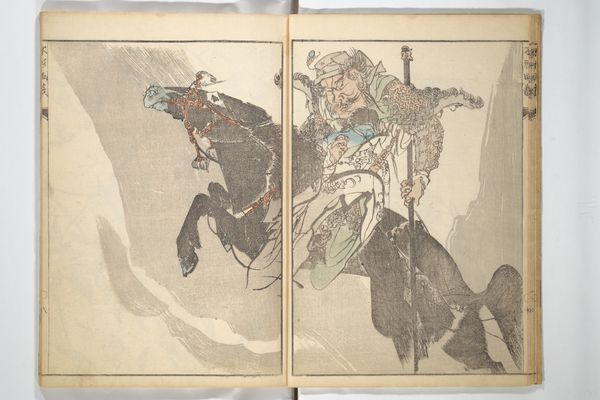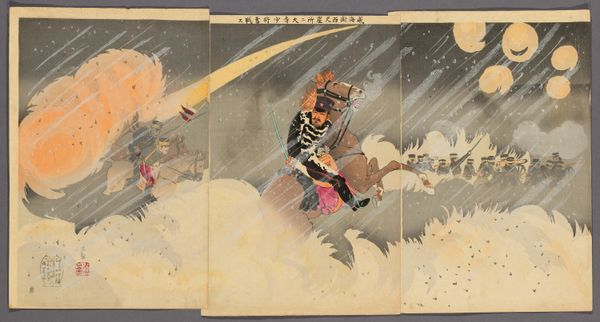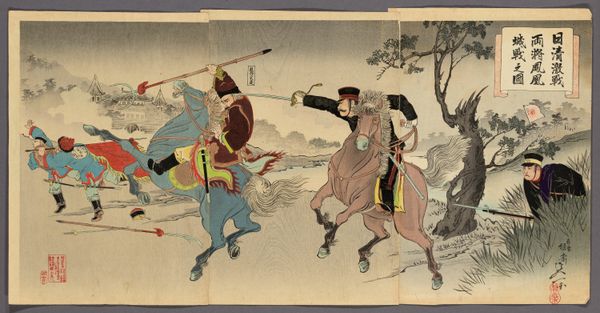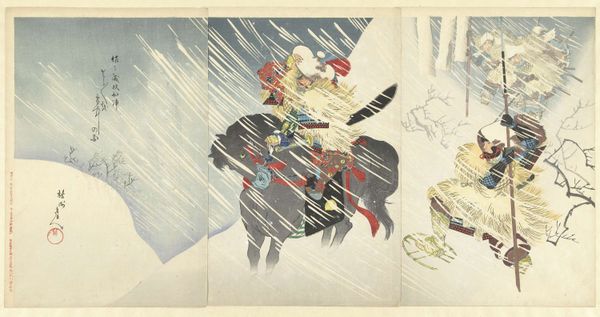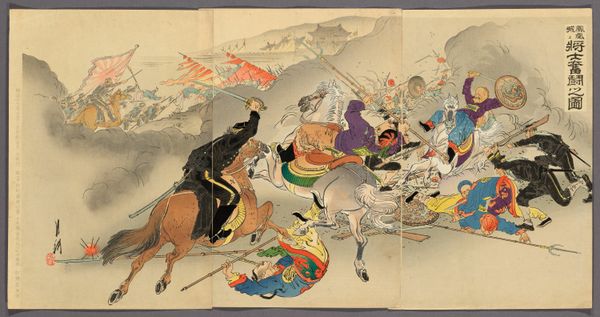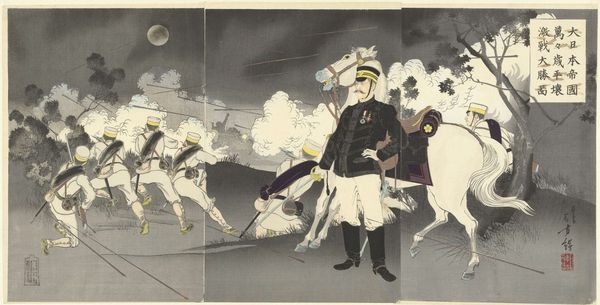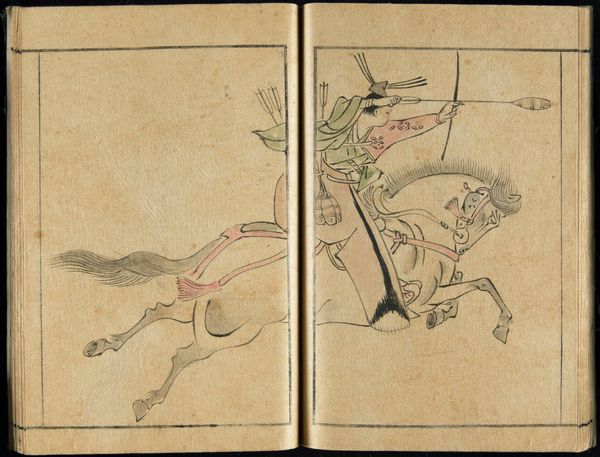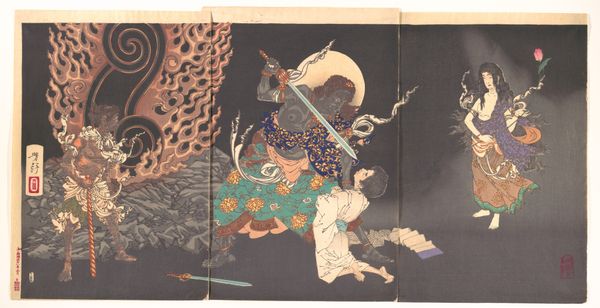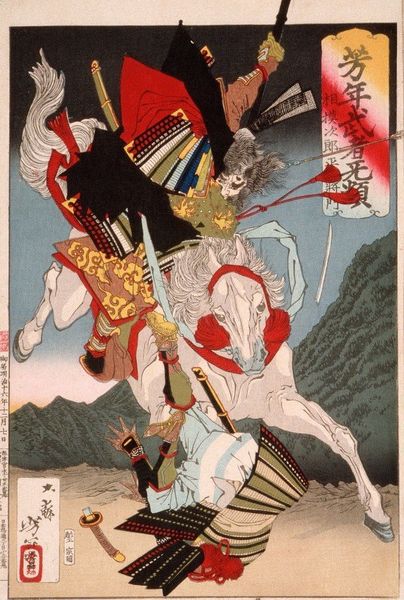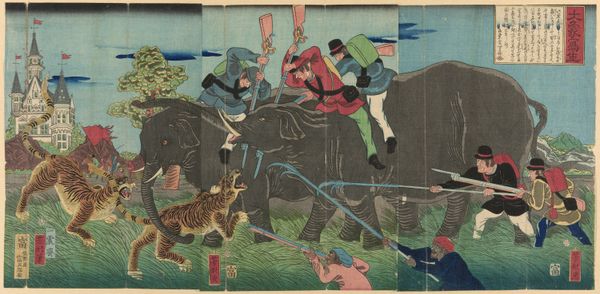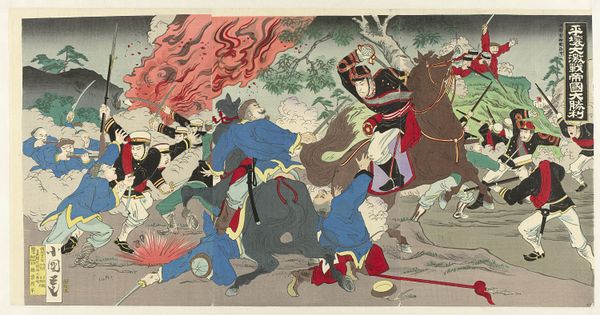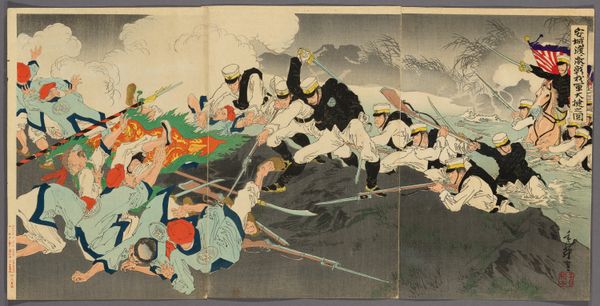
Captain Matsuzaki Bravely Fights at the Great Battle of Songhwan (Seikan no Gekissen, Matsuzaki Taii funyu no zu) 1894
0:00
0:00
Copyright: Public Domain
Curator: Look at this woodblock print titled "Captain Matsuzaki Bravely Fights at the Great Battle of Songhwan," created by Migita Toshihide in 1894. It depicts a scene from the Sino-Japanese War. Editor: It's striking! My initial impression is the dynamism. There’s so much movement, conveyed even through the chaos of what I presume is supposed to be the fog of war. The central figure on horseback dominates, almost floating above the turmoil. Curator: Indeed. The figure of Captain Matsuzaki is purposefully heroic. The artist utilizes familiar visual tropes of valor found in history painting. This was printed to serve a specific political purpose: to shape public perception of the war effort. Notice how he’s elevated, almost superhuman. Editor: Right, and the symbols reinforce that—the sword raised high, the powerful steed, even the explosions seem to frame him as this invincible force. How much of this heroic depiction reflected the reality of the war? Or do you think it's pure propaganda? Curator: Well, the reality of war is often far removed from such depictions. Prints like this served to generate patriotic fervor. There's a very distinct Orientalist framing at work, especially in how the artist chooses to render the conflict. I mean, ukiyo-e prints transitioned from depicting kabuki actors and courtesans to glorifying military campaigns, reflecting the evolving socio-political climate. Editor: The shift is quite stark, isn’t it? Moving from images that largely concerned entertainment and leisure to those steeped in nationalistic ambition. Looking at the colors—fiery oranges and yellows against muted greys—amplify that sense of conflict, almost an idealized battle as it filters into public memory. Even his horse looks otherworldly. Curator: Precisely! That red horse seems less like a war mount and more like a mythological Kirin or perhaps a dragon. These visual cues aren’t accidental; they draw upon a deeper well of cultural symbols. The scene becomes allegorical, turning Captain Matsuzaki into an archetype rather than an individual. Editor: I appreciate seeing the context and layers involved in what, at first glance, seemed to be a simple war depiction. It’s a potent reminder of the complexities embedded within seemingly straightforward historical narratives. Curator: And for me, thinking about cultural memory and its continuity in the face of something so traumatic helps me reflect on art’s potential to both glorify and offer catharsis.
Comments
No comments
Be the first to comment and join the conversation on the ultimate creative platform.
